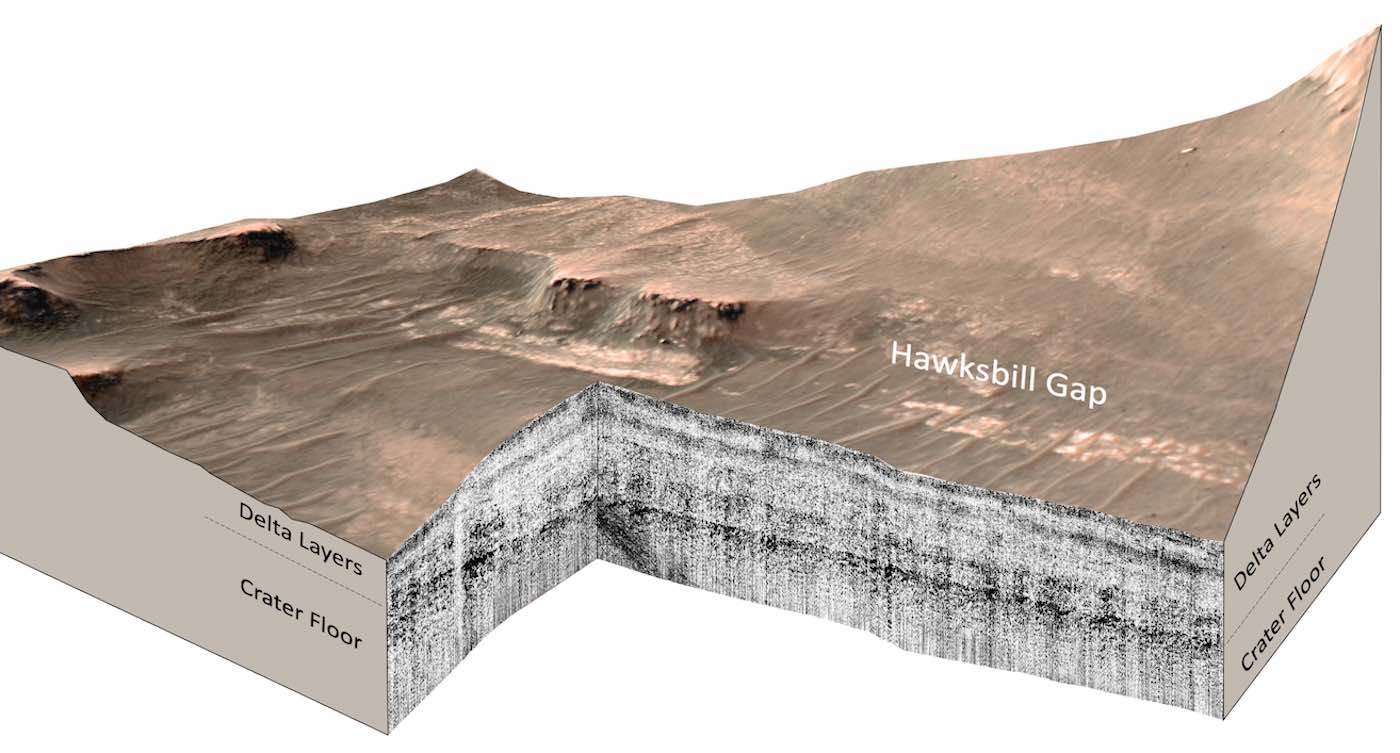
An ancient lake bed found on Mars may hold evidence of life on the planet, a new study has revealed.
The Mars Perseverance rover has confirmed that the Jezero crater at some point was filled with water, leaving lake sediments at its base.
If life ever existed on the planet, then the lake sediments found within this crater could hold traces of this.
The existence of these lake sediments had long been suspected from satellite images, but ground-penetrating radar is the first to confirm it.
“From orbit we can see a bunch of different deposits, but we can’t tell for sure if what we’re seeing is their original state, or if we’re seeing the conclusion of a long geological story,” said Professor David Paige from University of California-Los Angeles.
“To tell how these things formed, we need to see below the surface.”
The Perseverance rover, which is about the size of a car, has been exploring the 30-mile-wide crater since 2021.
In 2022, the rover drove up from the crater floor onto the delta, a vast expanse of 3-billion-year-old sediments that, from orbit, resembles the river deltas on Earth.
As the rover drove onto the delta, its Radar Imager for Mars’ Subsurface Experiment instrument (RIMFAX) fired radar waves downward at 10-centimeter intervals and measured pulses reflected from depths of about 65-feet below the surface (20 meters). With the radar, scientists can see down to the base of the sediments to reveal the top surface of the buried crater floor.
EARLIER: NASA Summarizes What New Mars Rover has Found as it Finishes it’s Mission at Just Over 1,000 Days
Years of research with ground-penetrating radar and testing of RIMFAX on Earth have taught scientists how to read the structure and composition of subsurface layers from their radar reflections. The resulting subsurface image shows rock layers that can be interpreted like a highway road cut.
The radar, published in the journal Science Advances, revealed two distinct periods of sediment deposits sandwiched between two periods of erosion.
The second period of deposition occurred when fluctuations in the lake level allowed the river to deposit a broad delta that once extended far out into the lake, but has now eroded back closer to the river’s mouth.
The radar images showed that the sediments are regular and horizontal—just like sediments deposited in lakes on Earth.
“The changes we see preserved in the rock record are driven by large-scale changes in the Martian environment,” explained Prof. Paige, who is RIMFAX’s deputy principal investigator on the study funded by NASA, the Research Council of Norway, and the University of Oslo.
LOOK: Mars Rover Camera Spots Bizarre Bone-like Structures
ALSO: ‘Unusual’ Circles Spotted on Mars by Reconnaissance Orbiter (LOOK)
“It’s cool that we can see so much evidence of change in such a small geographic area, which allows us extend our findings to the scale of the entire crater.”
Perseverance’s soil and rock samples will be brought back to Earth by a future expedition and studied for evidence of past life.
SHARE The SCIENCE Excitement On Social Media…




















